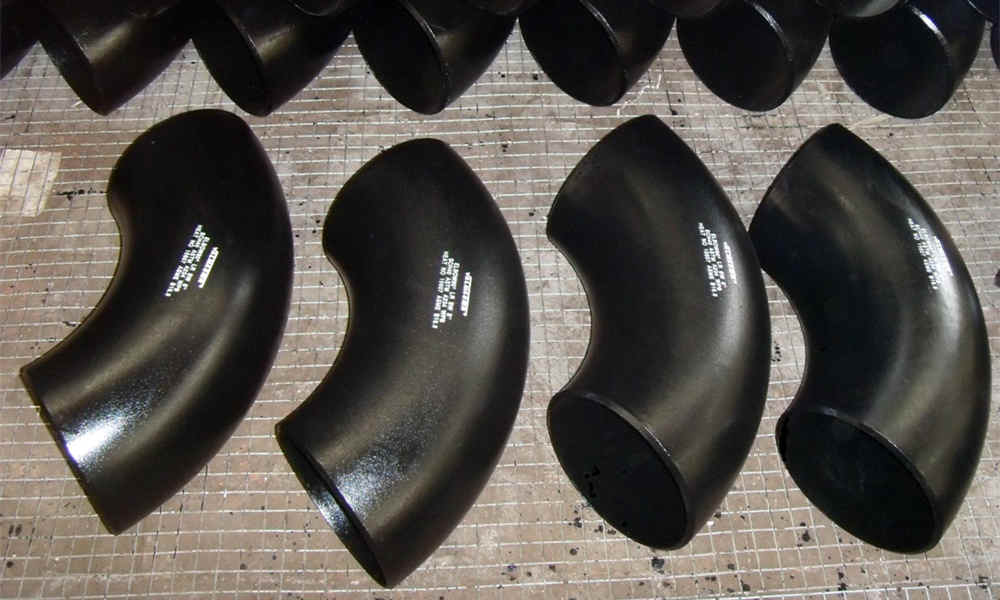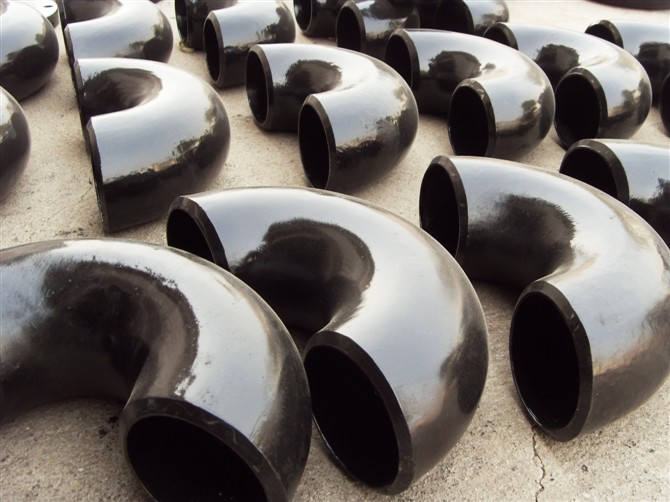Application and introduction of carbon steel elbow 45°
Carbon steel elbow 45° are classified based on various factors such as their manufacturing method, dimensions, and application.
Classification of carbon steel elbow 45°
Here are some common classifications for carbon steel elbow 45°:

Manufacturing Method:
Welded Elbows: These elbows are formed by welding two separate pieces of carbon steel together at a 45° angle.
Welded elbows are suitable for various applications and are available in different thicknesses.
Seamless Elbows: Seamless elbows are formed from a single piece of carbon steel without any welding.
They are known for their smooth internal surface and enhanced strength.
Seamless 45° elbows are often preferred in applications where the integrity of the pipe must be maintained.
Pressure Class or Schedule:
Elbows are often classified based on their pressure class or schedule. Common schedules include SCH 40, SCH 80, and others.
The schedule indicates the wall thickness of the elbow, and it is essential for determining the elbow’s pressure-bearing capacity.
Nominal Diameter (Nominal Size):
Carbon steel elbows with a 45° angle are available in various nominal sizes, ranging from small to large.
The nominal size is an approximate designation used to standardize elbow dimensions, and it is crucial for ensuring compatibility with the overall piping system.
Material Grade:
The material grade of carbon steel used in the elbow is another classification criterion.
Common material grades include ASTM A234 Grade WPB for carbon steel, and various alloy steel grades for applications that require enhanced properties.
Application or Industry Standards:
Elbows are often classified based on the industry standards they adhere to, such as ASTM, ASME, DIN, ISO, or other international or regional standards.
These standards specify the dimensions, materials, and testing requirements for the elbows.
Radius of Bend:
The radius of the bend in a 45° elbow can vary. Standard-radius elbows have a consistent radius, while long-radius elbows have a larger bend radius.
The selection depends on the specific piping requirements and space constraints.
Coating or Surface Treatment:
Some elbows may undergo additional surface treatments or coatings to enhance corrosion resistance.
Common coatings include galvanization, epoxy coating, or other protective layers, depending on the environmental conditions.
When specifying or selecting a carbon steel elbow with a 45° angle, it’s essential to consider these classification criteria to ensure that the chosen elbow meets the requirements of the intended application, industry standards, and relevant regulations.

The specifications of a carbon steel elbow with a 45° angle depend on various factors, including manufacturing standards, dimensions, material grade, and application requirements.
Specifications of carbon steel elbow 45°
Below are key specifications commonly associated with carbon steel elbows with a 45° bend:
Manufacturing Standards:
Carbon steel elbows, including those with a 45° angle, are manufactured according to industry standards such as:
ASME B16.9: Factory-Made Wrought Buttwelding Fittings.
ASTM A234/A234M: Standard Specification for Piping Fittings of Wrought Carbon Steel and Alloy Steel for Moderate and High-Temperature Service.
DIN 2605: Elbows and Bends with Reduced Pressure Factor.
EN 10253: Butt-welding pipe fittings.
Nominal Size (Nominal Diameter):
Carbon steel elbows are available in various nominal sizes, indicating their approximate size designation.
Common sizes for a 45° elbow range from smaller sizes to larger diameters, and the selection depends on the piping system requirements.
Pressure Class or Schedule:
Elbows are classified based on their pressure class or schedule. Common schedules include SCH 40, SCH 80, SCH 160, and others.
The schedule determines the wall thickness of the elbow and its pressure-bearing capacity.
Material Grade:
The material grade of carbon steel used for the elbow is specified to ensure the desired mechanical and chemical properties. Common material grades include ASTM A234 Grade WPB for carbon steel elbows.
Dimensions:
The dimensions of the elbow, including its outside diameter, inside diameter, and wall thickness, are crucial specifications.
These dimensions are often specified in accordance with the applicable standard, ensuring compatibility with the piping system.
Radius of Bend:
The radius of the bend in a 45° elbow is a critical specification.
Standard-radius elbows and long-radius elbows have different bend radii. The choice depends on the specific requirements of the application.
End Connections:
Carbon steel elbows typically have butt-weld end connections, but specifications may also include details about the type of end connections, such as plain ends or beveled ends, to facilitate welding.
Surface Treatment or Coating:
Specifications may include information about any surface treatment or coating applied to the elbow to enhance corrosion resistance. Common coatings include galvanization or epoxy coatings.
Testing and Inspection Requirements:
Standards often outline testing and inspection requirements to ensure the quality and integrity of the elbow.
Common tests include visual inspection, dimensional checks, and non-destructive testing methods like radiographic examination.
It’s important to consult the specific standard or specification relevant to the project or application to ensure that the carbon steel elbow with a 45° angle meets all necessary requirements.

Carbon steel elbows with a 45° angle find application in a variety of industries and piping systems where changes in direction are required.
Application of carbon steel elbow 45°
The specific use of a 45° elbow depends on the design and layout of the piping system. Here are some common applications:
Petrochemical and Chemical Industries:
Used in piping systems for the transportation of chemicals and petrochemical products, where changes in direction are needed for efficient fluid flow.
Oil and Gas Industry:
Employed in oil and gas pipelines to redirect the flow of crude oil, natural gas, and other hydrocarbons around obstacles or changes in the pipeline route.
Power Generation:
Found in power plants within piping systems that carry water, steam, or other fluids, helping to navigate the flow around equipment and machinery.
Water Treatment Plants:
Used in water treatment facilities to redirect the flow of water, chemicals, or other substances within the piping infrastructure.
Shipbuilding and Maritime Industry:
Applied in ship pipelines to change the direction of fluids, including water, fuel, or other materials, as required in the ship’s design.
HVAC (Heating, Ventilation, and Air Conditioning) Systems:
Incorporated in HVAC systems to facilitate changes in the direction of air or coolant flow within the building or industrial facility.
Construction and Building Services:
Utilized in plumbing and heating systems to navigate the flow of water or other fluids in buildings and construction projects.
Food and Beverage Industry:
Found in piping systems within food processing plants to redirect the flow of liquids or gases during various stages of production.
Automotive Industry:
Used in industrial processes within the automotive sector for conveying fluids or gases in manufacturing and assembly lines.
Mining and Minerals Processing:
Employed in mining operations for the transportation of minerals and slurry, where changes in direction are needed to navigate the terrain.
Agricultural Applications:
Utilized in irrigation systems and agricultural pipelines to change the direction of water flow for efficient distribution.
Pharmaceutical Industry:
Applied in pharmaceutical manufacturing processes to redirect the flow of liquids or gases in pipelines.
Carbon steel elbows 45° are versatile components that play a crucial role in optimizing fluid flow, reducing pressure drops, and facilitating efficient operation in various industrial sectors.

Their application is widespread, contributing to the seamless functioning of piping systems in diverse environments.
